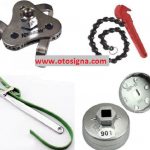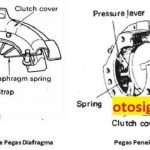When it comes to purchasing a motorbike, buyers are often presented with two main financing options: leasing and loans. Both methods offer a pathway to owning or using a motorbike, but they differ significantly in terms of cost, ownership, flexibility, and long-term value. Understanding the pros and cons of each option is essential to making a financially sound decision. As a professional accountant, I’ll guide you through these choices, breaking down their implications to help you determine the best fit for your needs.
What is a Motorbike Lease?
A lease is essentially a long-term rental agreement. You pay a monthly fee to use the motorbike for a specified period, typically two to five years. At the end of the lease term, you usually return the motorbike unless the lease includes an option to purchase.
Advantages of Leasing a Motorbike
- Lower Monthly Payments
Lease payments are often lower than loan payments because you’re only paying for the depreciation of the motorbike over the lease term, not the entire purchase price. - Access to Newer Models
Leasing allows you to ride a newer motorbike every few years without worrying about selling or trading in your old one. - Minimal Maintenance Costs
Most leases cover the warranty period, reducing the likelihood of significant repair costs. - Tax Benefits for Businesses
If the motorbike is used for business purposes, lease payments might be tax-deductible.
Disadvantages of Leasing a Motorbike
- No Ownership
You don’t own the motorbike, and at the end of the lease, you’ll need to either renew the lease or return it. - Mileage Restrictions
Leases often have mileage caps, and exceeding these can result in additional charges. - Wear and Tear Fees
Excessive wear and tear on the motorbike may lead to extra charges when the lease ends. - Limited Customization
Since the motorbike doesn’t belong to you, modifications or customizations are usually prohibited.
What is a Motorbike Loan?
A loan involves borrowing money to purchase a motorbike, which you repay over time with interest. Once the loan is paid off, you fully own the motorbike.
Advantages of a Motorbike Loan
- Ownership
At the end of the loan term, the motorbike is yours to keep, sell, or trade in as you see fit. - No Mileage Limits
Unlike leasing, loans come with no restrictions on how much you can ride your motorbike. - Freedom to Customize
As the owner, you can modify or personalize your motorbike to suit your style and needs. - Equity Building
Over time, the motorbike becomes an asset you can use as collateral or sell for cash.
Disadvantages of a Motorbike Loan
- Higher Monthly Payments
Loan payments are generally higher than lease payments since you’re covering the entire cost of the motorbike. - Depreciation Risk
Motorbikes depreciate in value, and you could owe more than the motorbike is worth if its value drops rapidly. - Maintenance Costs
Once the warranty expires, you’re responsible for all maintenance and repair costs. - Upfront Costs
Loans often require a down payment, which can increase the initial cost of acquiring the motorbike.
Lease vs. Loan: A Side-by-Side Comparison
| Aspect | Lease | Loan |
|---|---|---|
| Ownership | No | Yes |
| Monthly Payments | Lower | Higher |
| Upfront Costs | Minimal (often first month + fees) | Down payment required |
| Mileage Restrictions | Yes | No |
| Customization | Limited | Full freedom |
| Depreciation Concern | Minimal | High |
| End-of-Term Options | Return or buy | Own outright |
Factors to Consider When Choosing Between a Lease and a Loan
- Budget
If you need lower monthly payments and minimal upfront costs, leasing might be more appealing. However, if you can afford higher payments and want long-term ownership, a loan is the better choice. - Usage
Consider how much you plan to use the motorbike. If you ride extensively, a loan is preferable to avoid mileage penalties associated with leases. - Future Plans
If you like upgrading to the latest motorbike models every few years, leasing provides more flexibility. If you prefer to keep and own your motorbike for a long time, a loan makes more sense. - Customization
If you plan to customize or modify your motorbike, you’ll need to purchase it outright through a loan. - Tax Implications
For business users, leasing may offer tax benefits that a loan does not. Consult with a tax professional to understand your specific situation.
Key Takeaways
- Leasing is ideal for those who value lower monthly costs, minimal maintenance, and the ability to switch to newer models frequently.
- Loans are better suited for individuals who prioritize ownership, long-term value, and the freedom to use the motorbike without restrictions.
Each option has its own set of advantages and disadvantages. Ultimately, the decision between leasing and financing a motorbike depends on your financial situation, lifestyle, and future plans. As with any financial commitment, it’s essential to review the terms and conditions of the agreement carefully and consult a financial advisor if needed.
Related Topics
- Motorcycle Loan Interest Rates Comparison
- Credit Score Needed for a Motorcycle Loan
- Second Hand Motorcycle Finance Options
- Motorbike Lease vs Loan Which Option is Best for You
- Zero Down Payment Motorcycle Finance
- Best Loans for Motorcycles
- Motorcycle Financing Options
- Buying a Motorcycle on Finance A Comprehensive Guide
- Discover the Mechanics of Motorcycle Financing and Smart Decisions
- Expert Tips for Buying a Motorcycle on Credit

















